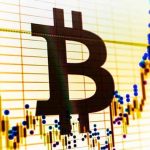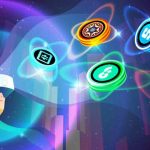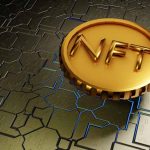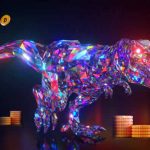What is Cardano and how does it work?
Cardano is one of the most popular forms of cryptocurrency, a kind of digital currency that exists exclusively online. Cardano was founded in 2015 and began trading publicly in October 2017 at the price of a few cents per coin. As of January 2022, the coin trades for more than $1.20, though it had peaked above $3 in the prior 52 weeks. It’s among the 10 largest cryptocurrencies by total value, according to CoinMarketCap.com.
What is Cardano?
Cardano is one of the most popular cryptocurrencies in a market of more than 10,000 crypto coins. The cryptocurrency is called Cardano, while the individual unit is called ada.
Cardano was created by Charles Hoskinson, a co-founder of Ethereum, another popular cryptocurrency, and it runs on a decentralized public ledger using blockchain technology. Blockchain manages and tracks the cryptocurrency, recording and ordering every transaction that occurs using it, like an endless receipt.
What does Cardano do?
Cardano enables several different features on its platform:
Currency: With a cryptocurrency wallet, you can send and receive Cardano or transfer it in exchange for goods and services.
Smart contracts: Cardano enables smart contracts, which are contracts that automatically self-execute when the contract’s conditions are fulfilled.
Decentralized finance: Cardano enables people to skip the middleman, such as banks and other financial institutions, to transact directly and on a permission-less basis with other individuals or entities.
Digital apps: As part of decentralized finance, Cardano can enable lending, trading, asset management, insurance and other typical financial services.
So it’s useful to think of Cardano as a token that powers various financial services rather than merely as currency, though that is one of its functions, too.
Cardano (ADA) Potential In 2022
Is Ada a good crypto?
Investing in Cardano? What to Know About ADA Cryptocurrency
Cardano, led by an Ethereum co-founder, has become one of the most highly valued cryptocurrencies.
Cardano is a fast-growing blockchain network that fashions itself as a next-generation competitor to Ethereum.
Investing in Cardano involves buying the network’s native cryptocurrency, known as ADA, which has grown in recent years to become one of the most highly valued digital assets on the market.
Cardano tokens can be used to pay for services on the network, or they can be bought or sold with U.S. dollars. Many buyers of Cardano also consider the tokens an investment, hoping they will rise in value as more people use the technology.
Buying Cardano also involves a considerable amount of risk. Cryptocurrency is a novel, volatile space in which the fortunes of any particular asset are difficult to predict.
Here are some details on how to buy Cardano. To evaluate whether that’s a good decision for you, you’ll need to understand how Cardano works, how it compares with other blockchain technologies and what you can do with Cardano.
How to buy Cardano
To buy Cardano, you’ll need to follow four basic steps:
- Decide whether to invest in Cardano.
- Find a place to buy it.
- Add value to your account.
- Buy and store Cardano.
Is Cardano a good investment?
3 Reasons to Buy ADA
Cardano should benefit from the development of dApps from now well into the future.
This cryptocurrency beats market giants in one key area.
Cardano’s development plan should result in a strong network that users can count on.
1. The story has just started
Cardano launched in 2017, but the blockchain still is in its early days. It recently completed a key step in its development. This fall, it launched smart contract functionality, which allows for the building of decentralized applications (dApps) on the blockchain. This is a major event because dApps offer real-world utility in areas from finance to gaming.
Right now, more than 900 scripts for dApps exist on Cardano, the Vercel app shows. But it may take time to deploy dApps on a grand scale. Cardano has been methodical about its development (more on that later), and that’s OK. It means that if we get in on the Cardano story today, which is early on, there likely will be plenty of catalysts for gains ahead.
2. It’s getting even faster
One problem with cryptocurrency transactions has been speed. Market-giant Ethereum currently processes about 30 transactions per second — an upgrade in 2022 should increase that to 100,000. Right now, Cardano beats Ethereum and many others. It processes about 250 transactions per second.
But wait a minute… won’t the Ethereum upgrade crush Cardano? Not so fast.
Cardano, too, is working on getting even faster. Through its Hydra layer-2 system, Cardano eventually should be able to handle 1 million transactions per second. Hydra works by using off-chain “heads” for certain transactions.
The Hydra launch is expected at some point next year and could push Cardano higher. But more importantly, it gives Cardano a reason to gain over the long term. For people to consistently turn to a blockchain for financial operations or anything else, speed of transactions will be key.
3. Well-thought-out development
Cardano has a plan. Developers know what’s coming next, and so can you. That’s important when you’re investing in an up-and-coming player.
Cardano has set out a five-stage roadmap with details of how it will get to its final goal of becoming a self-sustaining, completely decentralized network. It’s currently working on the last two stages.
The cryptocurrency also relies on peer review before launching changes or updates. This may slow things down, but it reduces the chances of glitches down the road. So it’s worth taking more time today if it means smooth sailing into the future.
It’s important to remember that cryptocurrency investments are risky. Never invest more than what you can afford to lose. If you’re comfortable with this, you may want to add Cardano to your portfolio. Its development efforts today could translate into leadership tomorrow.
Is Cardano right for you?
Cryptocurrencies have historically been prone to rapid shifts in value, and Cardano is no exception. That means that if you’re looking at Cardano or any other digital asset as a way to make a quick buck, you could be disappointed just as easily as you could be rewarded.
Generally, if you’re investing in cryptocurrencies, it’s best to keep them in a small cluster of high-risk investments in your portfolio. A general guideline for investors is to hold off until they’ve made more pressing financial moves, such as shoring up retirement and paying off short-term debt.
If you are in a position to purchase Cardano, it’s also worth thinking about its prospects for long-term growth.
Cardano is among several projects aiming to carry out a range of complex transactions without the help of a middleman such as a bank or a broker. If Cardano can grab a significant share of this market, demand for ADA cryptocurrency could rise — potentially increasing its value.
That said, Cardano is still in development and critical features, such as “smart contracts” that execute automatically when certain conditions are met, are only just rolling out. Competing networks such as Ethereum, Solana and others may wind up dominating the market, leaving little room for Cardano to grow.
What is Cardano Metaverse?
The Metaverse arrives on the Cardano blockchain
Hot on the heels of projects like Decentraland and the Sandbox Game on Ethereum, the Metaverse comes to the Cardano blockchain in the form of Pavia.io
Land Prices Surge on Cardano Metaverse Project Pavia
Over 60% of 100,000 virtual land plots have sold on Pavia, with the remaining set to go under the hammer later this quarter.
Gaming application Pavia launched on the Cardano network last week, becoming the first-ever metaverse project on the blockchain.
Some 100,000 ‘land parcels’ were issued on Pavia, each being minted as a unique non-fungible token (NFT) with individual ‘coordinates.’ Over 60% of these parcels were pre-sold in October and November 2021, with the remaining set to go on sale in the first quarter of 2022.
NFTs are blockchain-based representations of tangible or intangible objects. Metaverses generally describe a virtual world in which people can interact as they do in the real world, but digitally.
Pavia’s native token functions as an in-game currency, 25% of which was airdropped to NFT landholders following a blockchain snapshot in December 2021. Data from Muesliswap, a Cardano-based exchange, show pavia tokens sell for just over 20 cents at the time of writing and have a market capitalization of over $107 million.
Data shows there are now over 8,300 plot owners on Pavia. However, users cannot deploy assets over their plots as of Monday. “Please remember at this stage in development you cannot visit or deploy any content onto your land parcel,” documents from Pavia caution.
The Pavia Metaverse
It is very important to explain that this metaverse project is in its infancy, these are the very early stages of development, this digital world will only succeed with the love and support of the Cardano community. There are now over 8,300 land owners in Pavia.io Each land parcel is a uniquely numbered Cardano NFT (CNFT) based on coordinates within Pavia.io. Please remember at this stage in development you cannot visit or deploy any content onto your land parcel. We are working hard to deliver the in-game Pavia experience.
Cardano is a public blockchain platform. Cardano was founded in 2015 by Ethereum co-founder Charles Hoskinson.
Charles Hoskinson, the founder of Cardano and IOG, its development foundation, revealed some of the plans for the network’s growth in 2022 in a 30-minute Christmas Eve talk on YouTube from his home in Boulder, Colorado.
The metaverse is a massively scaled and interoperable network of real-time rendered 3D virtual worlds which can be experienced synchronously and persistently by an effectively unlimited number of users with an individual sense of presence, and with continuity of data, such as identity, history, entitlements, objects, …
Also read :
- What is NCT Crypto? Where can I buy NCT PolySwarm?
- The Advantages of Bitcoin Casinos + Best Online Casinos for Real Money & Online Gambling
- How Facebook plans to build its metaverse ?
- Top Cryptocurrency Traders To Follow + Most INFLUENTIAL People in Crypto
- Cardano-Based Ardana Will Build a Cross-Chain Bridge Between Cardano and NEAR
- What Is Bitcoin ? How does Bitcoin make money? How Bitcoin Works ?
- How to get Free Bitcoin ? without Mining or Trading | Earn Free BTC
- Axie Infinity : online game & the hottest crypto game on the market











